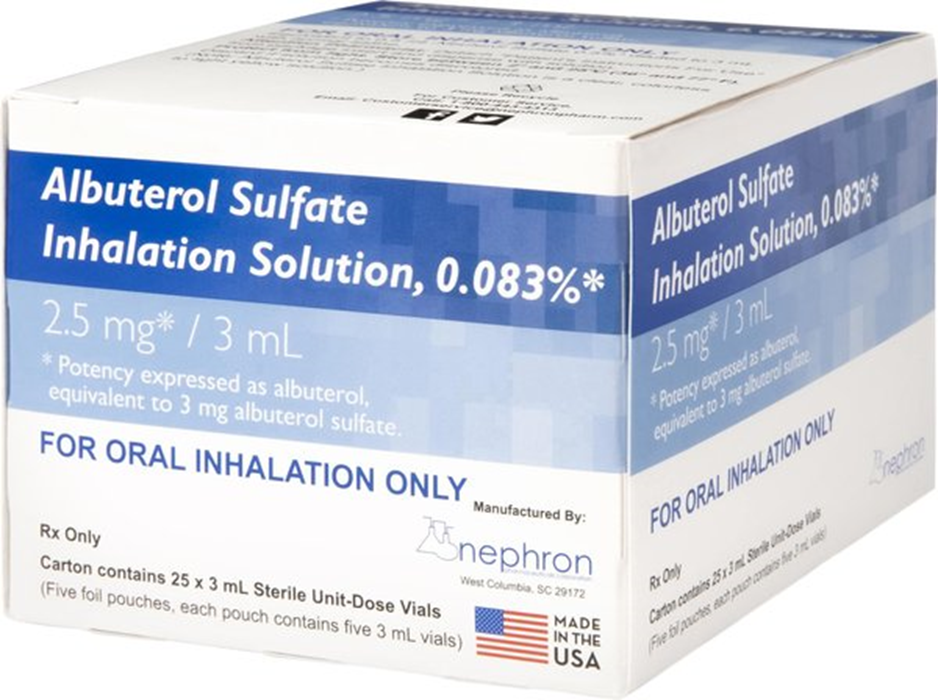A nurse is caring for an 18-month-old toddler in the emergency department. The nurse reviews the toddler's medical record and assessment findings. Which of the following provider prescriptions should the nurse anticipate?
acetaminophen suppository.
oral rehydration solution.
nebulized albuterol.
intravenous antibiotics.
The Correct Answer is C
Choice A reason: Acetaminophen suppository is not a likely prescription, as it is used to reduce fever and pain, which are not the main problems of the toddler. The toddler has a high axillary temperature of 39.5°C (103.1°F), which is not considered a fever in children under 2 years old. The normal axillary temperature range for children is 36.5°C to 37.5°C (97.7°F to 99.5°F).
Choice B reason: Oral rehydration solution is not a probable prescription, as it is used to prevent or treat dehydration caused by diarrhea, vomiting, or excessive sweating, which are not the main problems of the toddler. The toddler has a normal respiratory rate of 22/min and oxygen saturation of 98%, which indicate adequate hydration and oxygenation.
Choice C reason: Nebulized albuterol is a possible prescription, as it is used to treat bronchospasm, which is a common complication of respiratory infections in children. The toddler has a high apical heart rate of 142/min, which may indicate respiratory distress or hypoxia. The toddler is also pulling at his ear, which may indicate an ear infection or pain.

Choice D reason: Intravenous antibiotics are not a likely prescription, as they are used to treat bacterial infections, which are not the main problems of the toddler. The toddler has no signs or symptoms of a bacterial infection, such as purulent discharge, foul odor, or localized inflammation. The toddler may have a viral infection, which does not respond to antibiotics.
Nursing Test Bank
Naxlex Comprehensive Predictor Exams
Related Questions
Correct Answer is D
Explanation
Choice A reason: The child has acute lymphoblastic leukemia (ALL) and is receiving chemotherapy and steroids, which can cause constipation. The nurse should monitor the child's bowel function and provide interventions such as fluids, fiber, and laxatives as prescribed, but this is not an urgent finding.
Choice B reason: The child is in the induction phase of treatment for ALL, which can be stressful and frightening for the child and the family. The child's crying and clinging behavior indicates anxiety and fear, which are normal reactions. The nurse should provide emotional support and education to the child and the guardian, but this is not an urgent finding.
Choice C reason: The child has a fever, which is a common side effect of chemotherapy and steroids. The nurse should assess the child for other signs of infection, administer antipyretics as prescribed, and monitor the child's vital signs, but this is not an urgent finding.
Choice D reason: The child has a double-lumen central line catheter in the left chest wall, which is a potential source of infection. The erythema and purulent drainage at the insertion site indicate that the child has a local infection, which can spread to the bloodstream and cause sepsis. This is a life-threatening complication that requires immediate attention and treatment. The nurse should report this finding to the provider, obtain blood cultures, and administer antibiotics as prescribed.
Correct Answer is C
Explanation
Choice A reason: A respiratory rate of 24 breaths/min is within the normal range for a 3-year-old child. It does not indicate the degree of hydration or dehydration of the child.
Choice B reason: A heart rate of 130/min is above the normal range for a 3-year-old child, which is 80 to 120/min. It may indicate dehydration, fever, pain, or anxiety. It does not indicate the effectiveness of oral rehydration therapy.
Choice C reason: A urine specific gravity of 1.015 is within the normal range for a child, which is 1.005 to 1.030. It indicates that the child's urine is adequately concentrated and that the child is well hydrated. It is a reliable indicator of the effectiveness of oral rehydration therapy.

Choice D reason: A capillary refill of greater than 3 seconds is abnormal and indicates poor peripheral perfusion. It may be a sign of dehydration, shock, or hypothermia. It does not indicate the effectiveness of oral rehydration therapy.
Whether you are a student looking to ace your exams or a practicing nurse seeking to enhance your expertise , our nursing education contents will empower you with the confidence and competence to make a difference in the lives of patients and become a respected leader in the healthcare field.
Visit Naxlex, invest in your future and unlock endless possibilities with our unparalleled nursing education contents today
Report Wrong Answer on the Current Question
Do you disagree with the answer? If yes, what is your expected answer? Explain.
Kindly be descriptive with the issue you are facing.
